Since the dawn of time (I’ve always wanted to start a sentence like that), humans have slept for a little while, and then were awakened by something or someone that told them it was time to start the day. We know now the huge roles that sleep plays in so many aspects of our health:
- Physical recovery
- Healthy hormonal environment
- Stress regulator
- Cognitive retention and memory
- Appetite regulation
The Science Behind Sleeping and Waking
We have circadian rhythms that act as an internal clock of sorts, which usually run on roughly a 24-hour cycle. Researchers have identified that circadian rhythms can influence our sleep-wake cycle, and abnormal circadian rhythms have been associated with obesity, diabetes, depression, and other disorders.
Why am I telling you all this? Well, your circadian rhythms are produced by natural factors in your body, but can also be influenced by the environment. Light is the major cue influencing the rhythms that turn on or turn off genes that control your internal master clock. Having a normal, healthy circadian rhythm can be the difference between waking up ready to conquer the day or having to hit the snooze button a hundred times.
Using Light to Wake Up
So if light is one of our biggest cues to maintain a healthy circadian rhythm, use it! My beautiful wife gave me a gift on my birthday recently that I have found to be so helpful in waking up and feeling rested and ready to go. It’s a Phillips Wake-up Light, and it allows you to wake up naturally with the warm glow of the sun-like light that radiates from this futuristic-looking alarm clock. I absolutely love it!
 The light will begin to glow anywhere from 20 to 60 minutes prior to your set time to wake up (how hard you sleep will determine how much time you should have the light begin glowing). The light begins a reddish color to simulate the sun rising, and gradually becomes brighter and brighter until you wake up and turn it off. And if you were to sleep through the 20-minute light glow, you would be awakened by birds chirping.
The light will begin to glow anywhere from 20 to 60 minutes prior to your set time to wake up (how hard you sleep will determine how much time you should have the light begin glowing). The light begins a reddish color to simulate the sun rising, and gradually becomes brighter and brighter until you wake up and turn it off. And if you were to sleep through the 20-minute light glow, you would be awakened by birds chirping.
I have definitely noticed a difference in my energy level when I wake up these days, as well as my attitude and mindset heading into a tough day. I was experiencing some not-so-positive reactions to my alarm clock, which really set me up for rough start to the day, which in turn affected me throughout the entire day. Now that I am waking up naturally, and not shot out of a cannon to the sound of the buzzer, the morning is much more pleasant and meaningful.
Other Benefits of Waking Up Naturally
Some other fantastic benefits of waking up naturally include the following:
- Improved insulin regulation. This is important in managing body weight and body composition.
- Improved parasympathetic response. Instead of waking up in a “fight or flight” sympathetic response, which will result in elevated resting heart rates affecting many other aspects of health, we stay in a calmer state, allowing the internal environment to adjust appropriately to stress.
- Decreased muscle tone. I am not talking about losing muscle tissue. I am referring to “turning down” the tone of certain muscle groups that can be putting you into less-than-optimal body positions. For example (and one of the most common), toned-up lats will cause you to be in extension, which can lead to lower back pain. When we are calmer, and not so jacked up, we can allow the body to tone down when needed to improve positioning and movement patterns.
- Better mood! Life is way too short to be miffed all the time, and it just causes problems in so many facets of our lives. Most of this bad mood is communicated nonverbally, which in most cases is so much stronger than anything you could say. Take my word for it, be happy in both your message and how you deliver it. This can be greatly improved if you feel good and not groggy, which started hours earlier with the whack of the snooze button.
I highly recommend implementing some sort of a natural wake-up process that works for you. Most of us have smartphones. There are plenty of apps out there that can do the same thing as the wake-up light I describe above. Many of the newer fitness trackers such as a FitBit can also be set to gradually wake you up. Give it a try and let me know what you think, but have a back-up just in case it doesn’t work for you right away—don’t be late to work on my account!
This blog was written by Tony Maloney, ACSM Certified Exercise Physiologist and Fitness Center Manager. To find out more about the NIFS bloggers, click here.


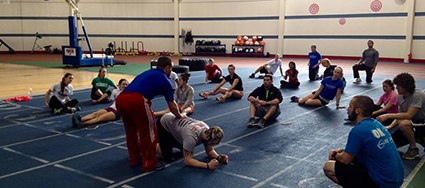 I have recently been given the opportunity to participate in some very cool opportunities professionally and personally. And although these two opportunities are things that I have had goals of achieving for quite some time, it did not take away from me being pretty terrified to take them on. I had to get comfortable being uncomfortable—and fast!
I have recently been given the opportunity to participate in some very cool opportunities professionally and personally. And although these two opportunities are things that I have had goals of achieving for quite some time, it did not take away from me being pretty terrified to take them on. I had to get comfortable being uncomfortable—and fast! 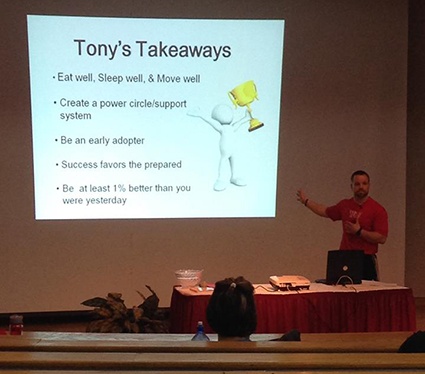 How to Succeed in Anything
How to Succeed in Anything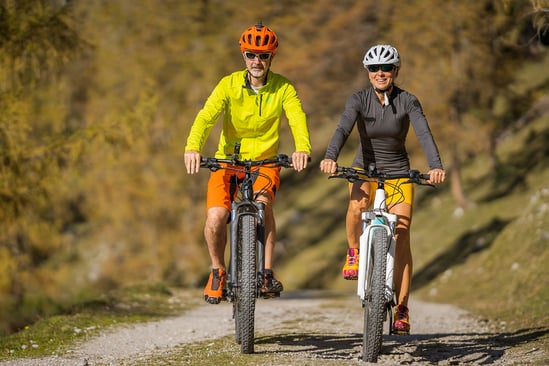 Biking can have significant benefits to your overall health and fitness! If you are looking for something to try that maybe you haven’t done in a while, consider hopping onto your bike…remember that’s that thing stashed in the back corner of the garage with flat tires and cobwebs hanging off the back of it!
Biking can have significant benefits to your overall health and fitness! If you are looking for something to try that maybe you haven’t done in a while, consider hopping onto your bike…remember that’s that thing stashed in the back corner of the garage with flat tires and cobwebs hanging off the back of it! 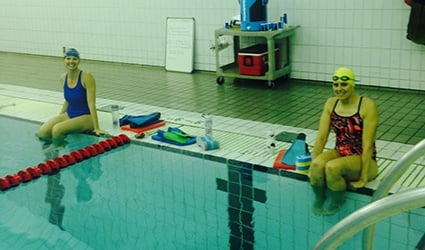 You have heard it over and over again: If you are not swimming, you are missing out on a great low-impact, total-body workout. If you were sore from beating yourself up from running on the roads or lifting earlier in the week, you will find yourself feeling much better after a good swim.
You have heard it over and over again: If you are not swimming, you are missing out on a great low-impact, total-body workout. If you were sore from beating yourself up from running on the roads or lifting earlier in the week, you will find yourself feeling much better after a good swim. 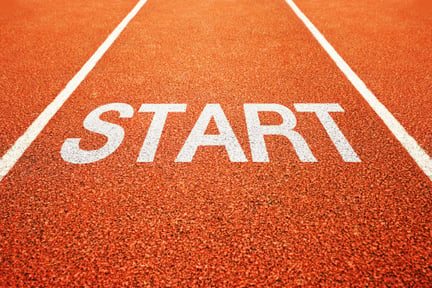 “Start somewhere today. Don’t put it off. You can do something, no matter how ‘small’ you think it is in terms of your long-term goal. Every step you take is one you’ll be thankful for when you get there. Remember: You're lapping everyone who’s still on the couch.” —
“Start somewhere today. Don’t put it off. You can do something, no matter how ‘small’ you think it is in terms of your long-term goal. Every step you take is one you’ll be thankful for when you get there. Remember: You're lapping everyone who’s still on the couch.” —
 As a natural-born morning person, many people frequently ask what my secret is for bursts of energy before the sun rises. While I may naturally be a morning person, there are a few things that I do in order to guarantee a successful morning workout because, believe it or not, there are times that even I find it hard to drag my bod to the gym to start my day.
As a natural-born morning person, many people frequently ask what my secret is for bursts of energy before the sun rises. While I may naturally be a morning person, there are a few things that I do in order to guarantee a successful morning workout because, believe it or not, there are times that even I find it hard to drag my bod to the gym to start my day. For people new to fitness, creating a healthy body image can be as challenging as creating a workout or diet plan. What do we consider healthy and why?
For people new to fitness, creating a healthy body image can be as challenging as creating a workout or diet plan. What do we consider healthy and why?
 The fall season is probably my favorite time of year. The weather is just how I like it, crisp and comfortable during the day and cool at night. The colors that arrive with the turning of the leaves are a demonstration of how creative Mother Nature can be. There is another phenomenon that takes place during this time of year that I anticipate all summer long, and that is FOOTBALL!
The fall season is probably my favorite time of year. The weather is just how I like it, crisp and comfortable during the day and cool at night. The colors that arrive with the turning of the leaves are a demonstration of how creative Mother Nature can be. There is another phenomenon that takes place during this time of year that I anticipate all summer long, and that is FOOTBALL! Everyone is demanding you give 100 percent effort on this exercise program or that workout plan. We say (or you hear), “You need to give 110 percent to achieve results. Or even better, “You’re nothing if you don’t give me your all.”
Everyone is demanding you give 100 percent effort on this exercise program or that workout plan. We say (or you hear), “You need to give 110 percent to achieve results. Or even better, “You’re nothing if you don’t give me your all.” Do you ever think about who you once were and how it compares to who you are now? What is different? Do you like the differences between the two? While you contemplate, think about how you became who you are today: the process, the trials, the ups and the downs, the victories and the losses, and maybe most importantly the way you now process thoughts and behavioral triggers.
Do you ever think about who you once were and how it compares to who you are now? What is different? Do you like the differences between the two? While you contemplate, think about how you became who you are today: the process, the trials, the ups and the downs, the victories and the losses, and maybe most importantly the way you now process thoughts and behavioral triggers.